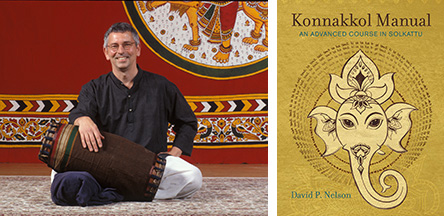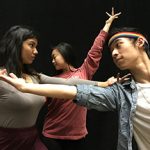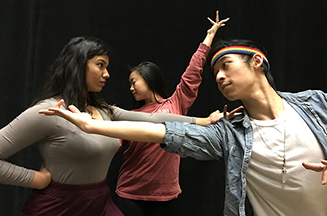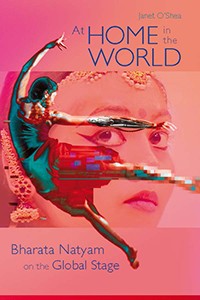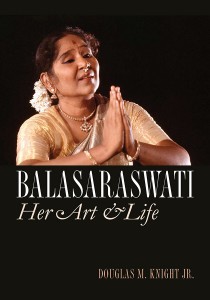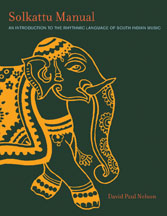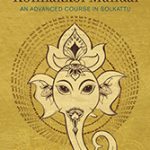
Exercises and theory for advanced students of Solkaṭṭu
“The South Indian rhythmic core, the demystifying strategies, transforming capability of the content and the manner of presentation, the authenticity of the rhythmic repertoire, the learning tips from the wealth of the author’s musical experience in South Indian drumming over half a century, gained from the acclaimed Karnatak music maestros—all this and much more, are most valuable for students, performers, teachers of improvisation in the world of music.”
— Karaikudi Subramanian, Founder and director of Brhaddhvani Research & Training Center for Musics of the World
Konnakkol Manual assists in the advanced study of Karnatak (South Indian) music. It picks up where Solkaṭṭu Manual left off, including advanced exercises and a discussion of the sources of Karnatak tāḷas (meters). In one chapter, the evolution of rhythmic compositions is illustrated through the work of three generations of musicians. The book contains full tani āvartanams (spoken percussion solos) in three tāḷas, together with instructions for practice and Solkaṭṭunotation. A hundred and fifty accompanying instructional videos are available at wesleyan.edu/wespress/konnakkol.
David P. Nelson has been performing and teaching South Indian drumming since 1975 and has a PhD. in ethnomusicology from Wesleyan University, where he is currently adjunct assistant professor.
“Konnakkol Manual is a very valuable addition to rhythm studies for any musician. The material is presented in a clear and systematic way, very appropriate for teachers and students.” —Glen Valez, New School
“The South Indian rhythmic core, the demystifying strategies, transforming capability of the content and the manner of presentation, the authenticity of the rhythmic repertoire, the learning tips from the wealth of the author’s musical experience in South Indian drumming over half a century, gained from the acclaimed Karnatak music maestros—all this and much more, are most valuable for students, performers, teachers of improvisation in the world of music.” —Karaikudi Subramanian, Founder and director of Brhaddhvani Research & Training Center for Musics of the World
“High caliber and innovative mrdangist David Nelson shares insights acquired over more than four decades in this well-paced guide to advanced rhythmic composition in South Indian music. Written in an inviting style and amply illustrated with video demonstrations, this manual will be useful for creative musicians of all backgrounds.” —Richard K. Wolf, author of The Voice in the Drum
“The lessons present the rhythmic concepts in a completely comprehensible and thorough way. This book may be the best way to dive into these concepts, short of getting on a flight to Chennai.” —Jamey Haddad, American percussionist
“Very courageous and musically friendly.” —Trilok Gurtu, percussionist and composer
June 4, 2019
200 pp. 28 illus., 8 1/2 x 11”
Paper, $34.95 978-0-8195-7878-5


